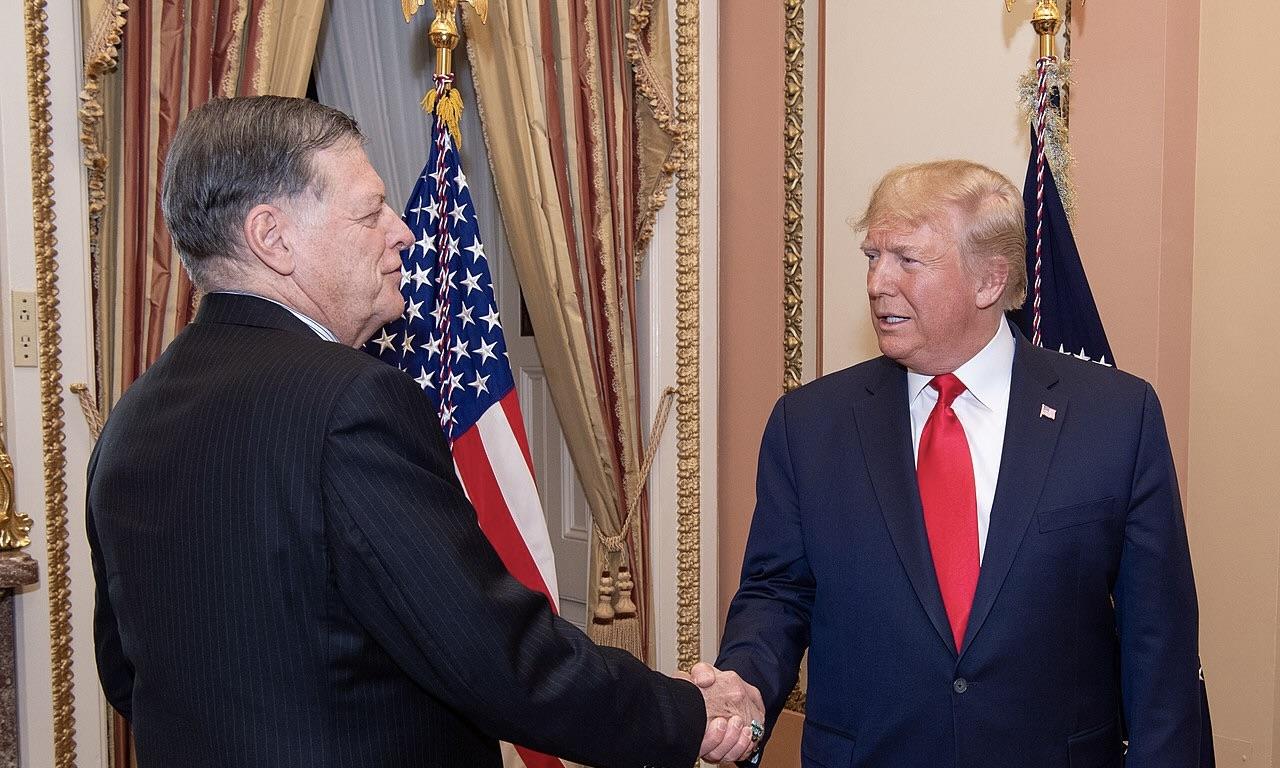Donald Trump’s 2025 border security strategy has ignited fierce debate as he lays out an aggressive plan to bolster national security. With promises to reignite construction of the border wall and implement sweeping enforcement measures, Trump’s approach has drawn sharp reactions from supporters and critics alike.
Rebuilding the Wall and Expanding Surveillance
Central to Trump’s plan is the resumption of the southern border wall’s construction, a hallmark of his first presidency. The administration has pledged to allocate substantial federal funds to finish previously halted sections while reinforcing existing barriers. Alongside physical infrastructure, Trump aims to expand the use of advanced surveillance technologies, such as drones and artificial intelligence, to monitor border activity.
Customs and Border Protection (CBP) will see increased resources and staffing under the new strategy, with plans to hire thousands of additional agents. Trump’s administration argues these measures are essential to combatting illegal immigration, drug trafficking, and human smuggling.
Critics, however, have questioned the wall’s effectiveness and warned about potential environmental and humanitarian consequences. “This isn’t just about national security; it’s a logistical and ethical challenge,” said Dr. Maria Lopez, a border policy expert.
Tighter Policies and Swift Deportation Protocols
Trump’s border agenda also includes enhanced enforcement policies, such as stricter asylum application processes and expanded expedited deportation protocols. The administration claims these measures will deter illegal crossings and streamline the immigration system.
Moreover, Trump has proposed working more closely with neighboring countries to curb migration at its source. By strengthening partnerships with Mexico and Central American nations, the administration hopes to address the root causes of migration, including poverty and violence.
However, human rights organizations have voiced concerns about the potential for abuse and the impact on vulnerable populations. “Rushed deportations and stricter asylum policies risk undermining international protections for those fleeing persecution,” said Lisa Kramer, director of the Global Human Rights Initiative.
Netizens React to Trump’s Border Plans
Trump’s border security proposals have ignited social media, with users expressing a wide range of opinions. User @SecureAmerica tweeted, “Strong borders make a strong nation. Trump’s vision is exactly what this country needs to stay safe.” On the other hand, @HumanityFirst criticized, “Walls and deportations won’t solve the crisis. We need compassionate solutions, not fear-driven policies.”
Some highlighted the economic impact. “Boosting CBP resources is good for security but comes at a hefty price tag,” wrote @PolicyRealist. Others raised environmental concerns. “The wall isn’t just controversial—it’s damaging fragile ecosystems along the border,” posted @EcoAdvocate.
Supporters rallied around the administration’s promises. “Illegal immigration has been out of control. Trump is bringing real solutions to the table,” wrote @BorderPatriot. Meanwhile, @ProgressiveVoices argued, “We should be building bridges, not walls. Collaboration, not isolation, is the way forward.”
Challenges and Next Steps
Trump’s border security strategy faces significant hurdles, including legal challenges and opposition from advocacy groups. Securing congressional funding will also be critical to advancing his agenda.
As the administration prepares to implement these policies, the nation remains sharply divided on whether Trump’s vision will enhance security or exacerbate divisions.



 Honduras Election Turmoil Deepens as Nasralla Alleges Fraud in Tight Presidential Race
Honduras Election Turmoil Deepens as Nasralla Alleges Fraud in Tight Presidential Race  Trump’s Name Appears on U.S. Institute of Peace Ahead of Rwanda–Congo Deal Signing
Trump’s Name Appears on U.S. Institute of Peace Ahead of Rwanda–Congo Deal Signing  China Urged to Prioritize Economy Over Territorial Ambitions, Says Taiwan’s President Lai
China Urged to Prioritize Economy Over Territorial Ambitions, Says Taiwan’s President Lai  Michael Dell Pledges $6.25 Billion to Boost Children’s Investment Accounts Under Trump Initiative
Michael Dell Pledges $6.25 Billion to Boost Children’s Investment Accounts Under Trump Initiative  U.S. Justice Department Orders Intensified Probe Into Antifa and Domestic Extremist Groups
U.S. Justice Department Orders Intensified Probe Into Antifa and Domestic Extremist Groups  Trump Administration Tightens H-1B Visa Vetting With New Focus on Free Speech and Censorship
Trump Administration Tightens H-1B Visa Vetting With New Focus on Free Speech and Censorship  Taiwan Signals Openness to Renew Ties with Honduras as Election Unfolds
Taiwan Signals Openness to Renew Ties with Honduras as Election Unfolds  Trump Claims He Will Void Biden Documents Signed with Autopen
Trump Claims He Will Void Biden Documents Signed with Autopen  U.S. Repatriation Flight Carrying 266 Venezuelan Migrants Lands in Caracas
U.S. Repatriation Flight Carrying 266 Venezuelan Migrants Lands in Caracas  China’s Expanding Maritime Military Presence Alarms Taiwan and Japan
China’s Expanding Maritime Military Presence Alarms Taiwan and Japan  U.S. Defense Chief Pete Hegseth Defends Controversial Second Strike on Suspected Drug-Smuggling Vessel
U.S. Defense Chief Pete Hegseth Defends Controversial Second Strike on Suspected Drug-Smuggling Vessel  U.S.-Russia Talks Leave Ukraine Peace Efforts Uncertain
U.S.-Russia Talks Leave Ukraine Peace Efforts Uncertain  Cuba Reaffirms Anti-Drug Cooperation as Tensions Rise in the Caribbean
Cuba Reaffirms Anti-Drug Cooperation as Tensions Rise in the Caribbean  Taiwan Opposition Criticizes Plan to Block Chinese App Rednote Over Security Concerns
Taiwan Opposition Criticizes Plan to Block Chinese App Rednote Over Security Concerns  Israel Receives Body of Deceased Hostage as Rafah Crossing Reopening Hinges on Final Returns
Israel Receives Body of Deceased Hostage as Rafah Crossing Reopening Hinges on Final Returns  UN Chief Says Gaza Operation “Fundamentally Wrong” as Concerns Over War Crimes Grow
UN Chief Says Gaza Operation “Fundamentally Wrong” as Concerns Over War Crimes Grow  UN General Assembly Demands Russia Return Ukrainian Children Amid Ongoing Conflict
UN General Assembly Demands Russia Return Ukrainian Children Amid Ongoing Conflict 































